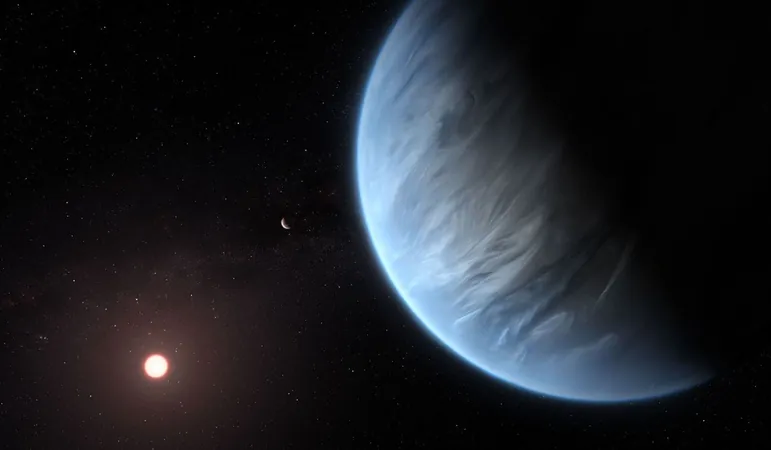
Are the Hopes for Ocean-Covered Exoplanets Fading Away?
2025-09-22
Author: Wei
The Myth of Water Worlds: New Revelations
For years, scientists have dreamt of finding sub-Neptune planets—believed to be 'water worlds'—but a groundbreaking new study suggests these planets might be more like barren deserts than aquatic havens.
What Are Sub-Neptune Planets?
Sub-Neptune planets are larger than Earth but smaller than Neptune. They were thought to form far from their stars, gathering ice beyond the 'snow line,' and potentially developing vast oceans of water beneath hydrogen-rich atmospheres as they migrated inward.
The Latest Study Challenges Conventional Wisdom
Caroline Dorn, an assistant professor of Physics at ETH Zürich and co-leader of the study, stated, "Our calculations show that this scenario is not possible." This revelation comes on the heels of excitement surrounding K2-18b, an exoplanet about 124 light-years away that was recently touted as a potential ocean world brimming with life.
K2-18b: The Ocean World That Could Be
K2-18b captured global attention when scientists analyzing data from the James Webb Space Telescope (JWST) hinted at the presence of dimethyl sulfide—a potential biomarker—suggesting an environment conducive to life. However, skepticism quickly followed, with independent investigations disputing the strength of this evidence.
Inside the New Research Findings
The new study modeled the evolution of 248 sub-Neptune planets, focusing on the interactions between magma and their atmospheres. Astonishingly, they discovered that none of the modeled planets had the massive water content previously expected. Dorn noted, "Hycean worlds with 10-90 percent water are therefore very unlikely." Most of the water ended up bound with the planet’s core materials.
The Implications for Astrobiology
This research poses significant challenges for the field of astrobiology. If 'Hycean' planets are improbable, the most promising candidates for liquid water—and perhaps life—may actually be smaller, rocky planets resembling Earth.
K2-18b: A Planet Worth Exploring Further
Despite these new findings, K2-18b remains an intriguing target for future research. Given that sub-Neptunes are a common type of planet in the galaxy, studying K2-18b might shed light on how planetary systems develop across the universe.
Reassessing Earth's Uniqueness
The study's findings lead to a humbling conclusion: Earth might not be as unique as once thought. Dorn concludes, "It appears to be a typical planet," prompting a re-evaluation of our place in the cosmos and the nature of distant worlds.





 Brasil (PT)
Brasil (PT)
 Canada (EN)
Canada (EN)
 Chile (ES)
Chile (ES)
 Česko (CS)
Česko (CS)
 대한민국 (KO)
대한민국 (KO)
 España (ES)
España (ES)
 France (FR)
France (FR)
 Hong Kong (EN)
Hong Kong (EN)
 Italia (IT)
Italia (IT)
 日本 (JA)
日本 (JA)
 Magyarország (HU)
Magyarország (HU)
 Norge (NO)
Norge (NO)
 Polska (PL)
Polska (PL)
 Schweiz (DE)
Schweiz (DE)
 Singapore (EN)
Singapore (EN)
 Sverige (SV)
Sverige (SV)
 Suomi (FI)
Suomi (FI)
 Türkiye (TR)
Türkiye (TR)
 الإمارات العربية المتحدة (AR)
الإمارات العربية المتحدة (AR)